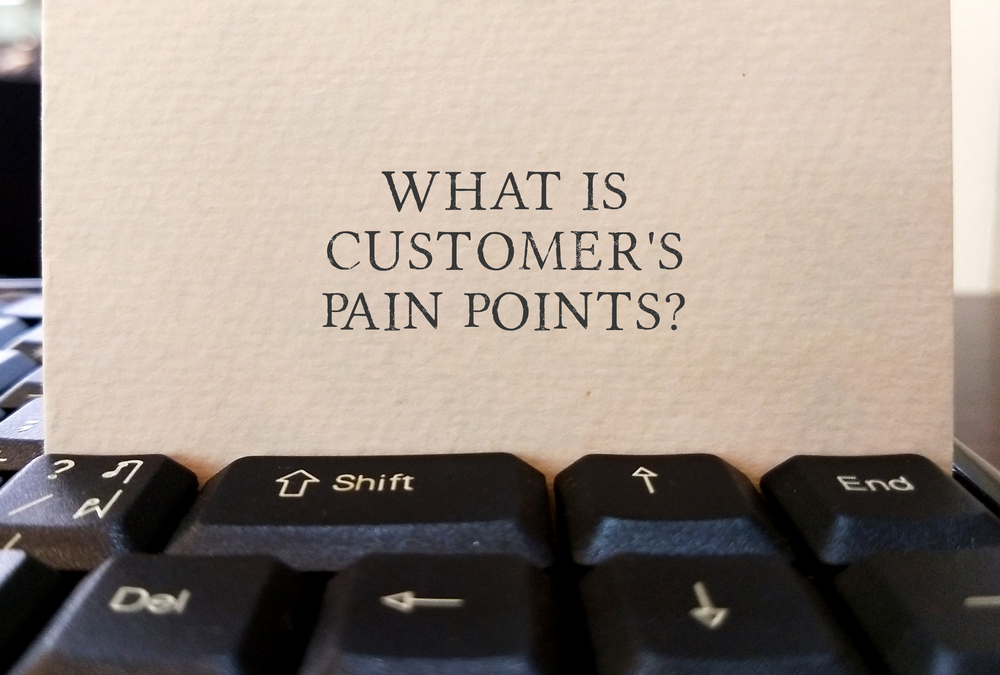What is a Pain Point?

A real headache. That’s what happens to many companies when they try to design a marketing strategy to attract as many consumers as possible. They feel like they don't quite know what they’re doing or where to start. At this point it’s key to understand what a pain point is and how it affects consumers.
We know for sure that consumers buy a product or service because they need it for their daily life or simply because they want to solve a problem they have, and our brand or company offers them a solution.
However, this is where the problems start for most companies. It’s often not an easy task to find the customer's concern, which is the key that opens the door to conversion.

Therefore, it’s of vital importance to be able to identify the pain points of customers, to get a boost to position the marketing strategy and get new sales for your business.
In this new post, we want to talk about everything that has to do with pain points: what they are, how they can be identified in customers or the different types of pain points that we can find in digital marketing.
Join us on this exciting journey through the decision-making process of a customer prior to the purchase of a product or service.
“To deliver the right message to the right person at the right time, you must first collect the right data in the right database at the right time” (John Caldwell).
What is a Pain Point in marketing?

Let's start with the exact definition of what a pain point is.
In the world of digital marketing, pain points are problems that your customers may have and that, in one way or another, can be solved with the products or services you offer.
Important note: if your marketing plan doesn’t consider the pain points your customers may have, it’ll be very difficult to get close to them.
Game over...
However, it's not as simple as it sounds. Not everyone is aware of the problems they have, which makes it even more difficult to convince them that you’re the solution.
You must make the customers see that they’ve got a problem and that you’ve arrived to provide the definitive solution.
Let's say you must set yourself up as their “saviour”.
Sometimes we tend to think of pain points as simple problems that can be solved quickly. The truth is that that isn’t always the case. The problems are often much more complex, and sometimes there are several at once.
The different pain points

“There are many opportunities that you can discover by listening to what your customers are saying”. (Joei Chan)
When we talk about pain points, we’re not referring to a single pain point. We’re talking about several ones, as each user will have different problems, and we need to know them in depth.
Likewise, we can group pain points into several categories. However, we’ll show you the 3 most common ones:
- Pain points during the sales process: this is the most common and the one that causes the most headaches. There are many users who stop a sale in its tracks because it takes too long to complete the different transactions. If you know what a pain point is, you’ll know that it’s an inconvenience that, if you manage to get it under control, the conversion rate will increase, customer satisfaction will improve, and this will be reflected in more revenue.
- Monetary pain points: when users are spending a lot of money to solve their problems, but they aren’t being solved. So, they want to pay less and get their problems solved. If you manage to stand out from your competition, position yourself as their “saviour” and cut costs considerably, you’ll win the game.
- Support pain points: when your potential customers don't find the help and support they need, the buying process often goes down the drain. You need good support to provide the right help, at the right time, to those potential customers.
How can we find the pain points?

“What we need to do is to stop interrupting what people are interested in and start being present to what they’re interested in, without interrupting”. (Craig David)
We’re slowly moving forward in the article and now that you know more in depth what pain points are, let's move on to see how we can identify them quickly and easily.
Before starting, you should bear in mind that, although several potential customers may appear with quite similar pain points, the cause may be very different.
Therefore, it’s essential to study them well to offer solutions that are in line and prioritise them according to their order of importance.
Now we’re going to show you the 5 easiest ways to find pain points.
1. Study the competition
This is a classic in any marketing strategy you want to develop. Check out your competitors (such as their blogs) and try to make sure they’re always the most relevant. Have a look at their publications: how and when they publish, and the content they show.
From here, you’ll get many ideas about important aspects such as customer concerns and a detailed list of all those pages that generate the most traffic.
2. Read and analyse comments
All those comments left by users on the posts published on a blog, believe it or not, are very important. Among all of them, you’ll find all kinds of comments: good, bad, empty, without any constructive criticism…
However, the key will be to pay attention to those comments that may express concern, generate debate, doubts, or problems.
3. Interviews or questionnaires
Interviews? Yes, you read that right. Here you can use your journalistic skills and, in addition to researching, you can find out the concerns of potential customers through interviews.
These can be either individual or group interviews. If you’ve got a good portfolio of clients, you can introduce a small group workshop.
These group workshops are very useful, as you can chat in a natural and relaxed way with your customers, especially to know first-hand their opinion and their different pain points.
You can also use this information as a starting point to learn about different pain points of other potential customers.
4. Sales team
A great resource for detecting pain points is to meet with the sales team. They’re on the front line; they’re the link between customers and the products or services you offer.
Chat with them, ask about sales processes, find out how services/products are promoted and find out what your customers and potential buyers are concerned about.
5. Social media
Social media has played a key role in marketing strategies in recent times.
However, as you may already know, not all of them are useful or valid for developing these campaigns. The most useful ones are usually Facebook and Instagram.
These social networks are an excellent tool to get to know the most common pain points of your audience about your products or services.
Take a look at all those corporate profiles that you think are of interest, without forgetting to keep an eye on your closest competitors.
Important note: Remember that the solution to the same pain point won’t always be the same: what works for one client won’t necessarily work for another. Every person is different.
Similarly, a very useful way to attract more customers and detect their weaknesses is to publish customer recommendations or recent product or service reviews.
If potential consumers can see that what you sell has helped them and solved their problem, it’s the best possible way to lay the foundations of good branding.
The importance of pain points in digital marketing

If you still have doubts about whether pain points are important in marketing, it’s better that you keep reading.
To increase your sales and branding, it’s vital that you know the pain points of your potential customers, as it will be a great sales opportunity and can present your brand as the best option of all.
By being able to capture people's real needs, without wanting to offer something they don't need and without using invasive advertising that often repels potential customers, we’ll be very close to offering them a solution.
We should be placed in a position that allows us to be chosen: we must be there for customers when they actively look for a solution to their needs and problems.
Ultimately, now that you know very well what a pain point is, you should implement it in your marketing strategy. Do so, as we’ve been telling you throughout this post, and you’ll see that the results it brings you will make a difference and will lead you to a privileged position among consumers.







